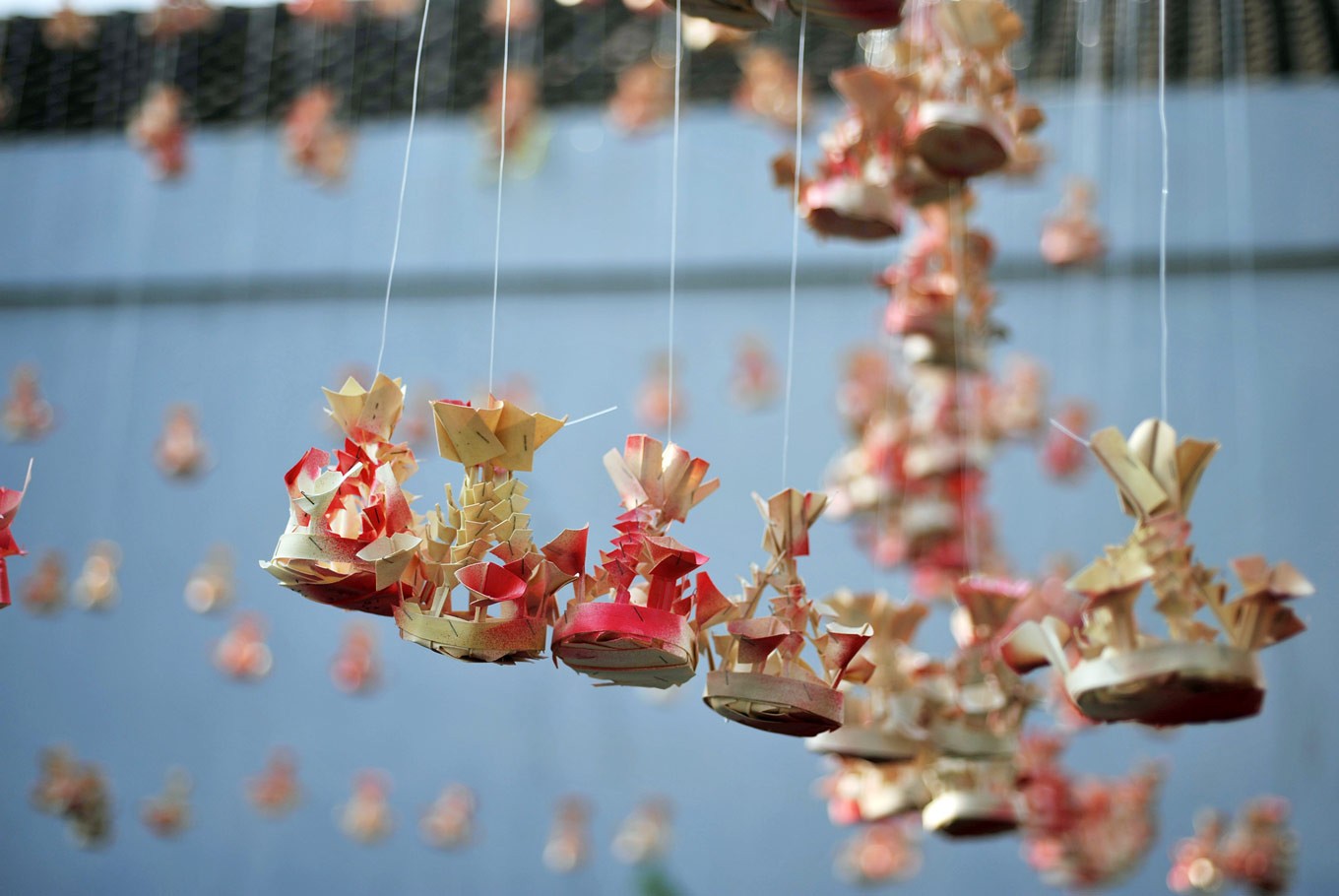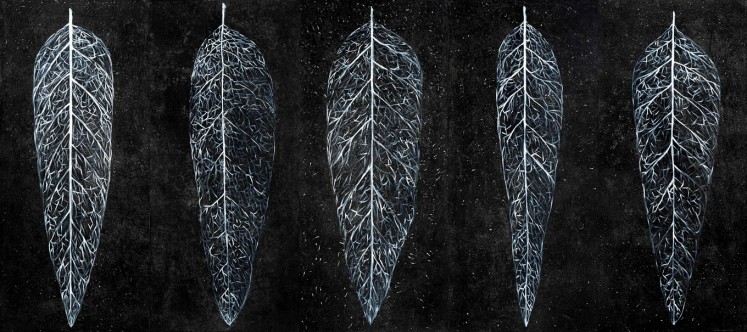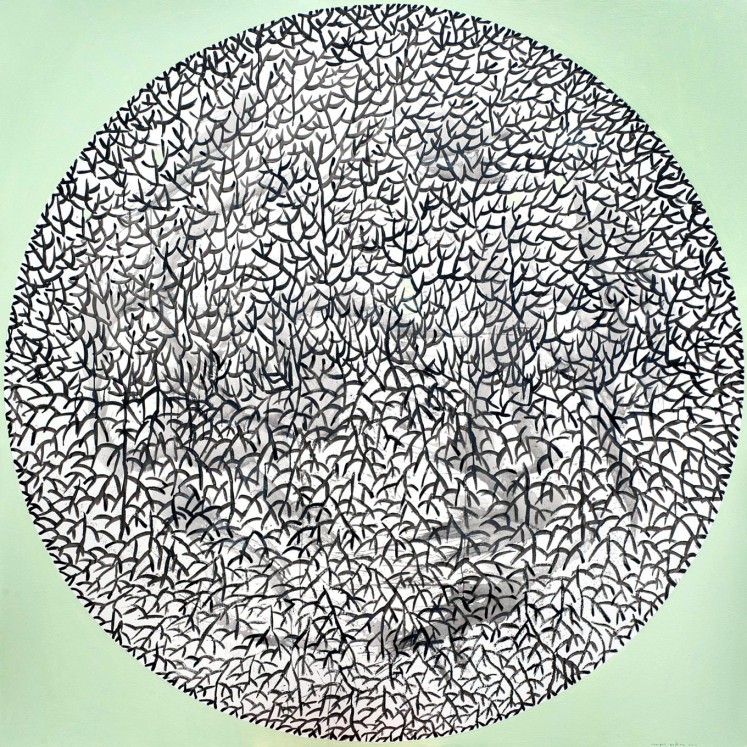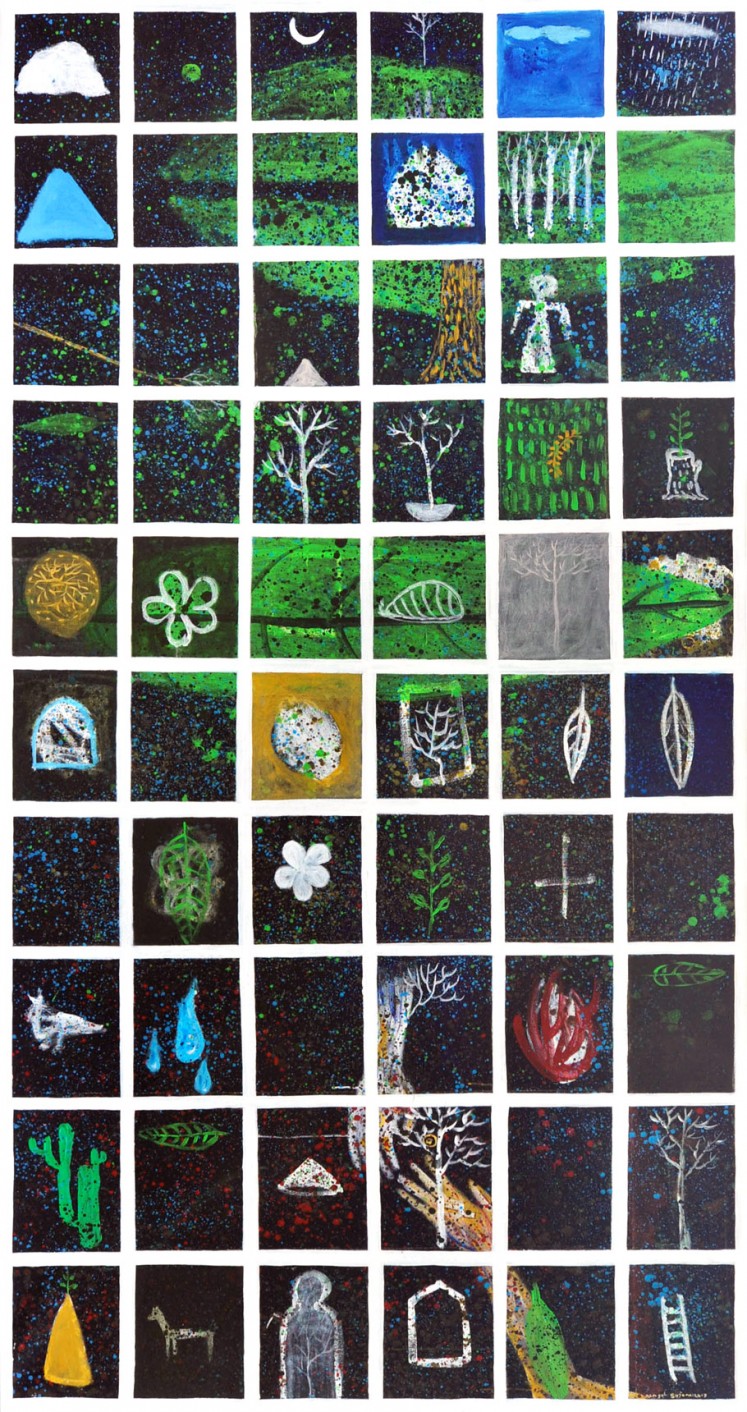Popular Reads
Top Results
Can't find what you're looking for?
View all search resultsPopular Reads
Top Results
Can't find what you're looking for?
View all search resultsNature within
Change text size
Gift Premium Articles
to Anyone
A painter reflects on the interconnectivity between humans and nature.
I Nengah Sujena, one of the island’s leading contemporary painters, continues his exploration of the interconnectivity between humans and nature in Revelation of Nature, an ongoing exhibition at Ubud’s Komaneka Fine Art Gallery.
Some of the 22 works on display poignantly question the prevailing anthropocentric perspective that for centuries has convinced man of his supremacy over the other entities, including nature.
At its worst interpretation, the perspective “elevates” man into a separate, higher being with an innate right to rule over nature and to decide what is best for the other creatures. This interpretation has been blamed for humanity’s brutal and incessant exploitation of the Earth.
It is a savage act that has triggered irreversible environmental catastrophes, driven numerous plant and animal species to extinction and will likely toss human beings into the brink of self-inflicted annihilation.
Menyentuh Bumi (Touching Earth) (Komaneka Fine Art Gallery/File)
Sujena, who was born and still lives in a rural hamlet in Bangli regency, offers a powerful counterargument to that perspective, stressing that not only are humanity and nature interconnected, but that they are also present and exist within each other. Rather than being two separate entities, humans and nature are actually and essentially identical.
This alternative narrative has its roots in two important teachings in Balinese Hinduism: “Tri Hita Karana” and “Bhuana Agung” with “Bhuana Alit”.
“Tri Hita Karana”, literally the three sources of happiness, stipulates that a harmonious, rather than an exploitative, relationship between humanity, nature and the divine is the key for ultimate happiness. When a Balinese Hindu speaks about the ultimate happiness the terms he uses is jagadhita, literally a blissful world, and moksha, literally a union with God. Both require the “dissolution” of man’s egoistical existence; in jagadhita man merges with nature while in moksha man is totally absorbed by God’s presence.
An installation piece set above the pond in front of the gallery speaks volumes about Tri Hita Karana. Dozens of tulung urip, tiny decorated palm-leaf containers used in Hindu rituals, are suspended on transparent strings and give an illusion of a flock of birds hovering and flying freely. Tulung urip literally means life’s helper and the installation is clearly Sujena’s way of appealing to his fellow men’s consciences to start taking care of nature.
Ranting (Branches) Series #3 (Komaneka Fine Art Gallery/File)
“Bhuana Agung” (the Cosmos) and “Bhuana Alit” (Man) stipulate that the universe and man are constructed with the same elements, thus, their fates are eternally intertwined. Inside the Cosmos man resides and within the body of a man the Cosmos exists, the teaching says. Consequently, a man who destroys nature is actually destroying himself.
Menatap Keindahan (Observing Beauty) and Hukum Alam (Law of Nature) are two of the best examples of Sujena’s visual counterargument against the anthropocentric perspective using the teaching of “Bhuana Agung” and “Bhuana Alit”.
In both works, a gigantic human figure is set against a solid-colored canvas. In Menatap Keindahan, a tall green tree, a blue mountain and scores of human eyes are housed inside the predominantly white human, while in Hukum Alam, a tree sprung out of the top of the human figure’s head and his torso is filled with intertwined branches, red flowers and fallen leaves. Both works are acknowledgements of nature within man and the merging of man with the Cosmos.
Potret Alam (Nature's Portrait) (Komaneka Fine Art Gallery/File)“Sujena’s paintings indicate an interesting exploration of spatial experience. His extremely simplified images seem to emphasize the flat nature of painting. Nevertheless, his compositions often present the appearance of objects in depth. Patterns of abstraction, textures, deformations and repetitions create a spatial ambiguity that evokes dramatic pictorial tensions,” art critic Arif Bagus Prasetyo said.
Born in 1976, Sujena has received several accolades, including the Merit Award in the Asia-Pacific Nokia Art Awards in 2000. He has participated in more than 60 solo and group exhibitions here and abroad.
Revelation of Nature, which will run until Sept. 27, is part of Komaneka Fine Art Gallery’s Coming Home series.
“The Coming Home series shows the work of local artists who first joined the gallery in the 1990s and 2000s when they were still young, and have since gone on to gain international recognition. In this sense, their return to Komaneka Fine Art Gallery is a kind of homecoming, a return to their roots,” gallery owner Koman Wahyu Suteja said.
_________________________
Revelation of Nature
Aug. 27- Sept. 27, 2017
Komaneka Fine Art Gallery
Jalan Monkey Forest, Ubud
( 0361 )-4012217
gallery.komaneka.com














